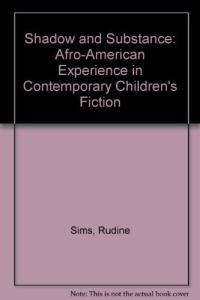
Shadow and Substance: Afro-American Experience in Contemporary Children’s Fiction
Find This Book
ISBN 0814143768
Purchase on Amazon
ISBN 0814143768
Purchase on AmazonThis seminal work identifies and addresses key issues that have become touchstones in the study of African-American children’s literature. It provides classroom teachers, librarians, and teacher educators in the field of children’s literature with information to build stronger multicultural collections for libraries and classroom study. The first chapter of the work places contemporary realistic fiction about Afro-Americans in a sociocultural and historical context, while the second chapter discusses the “social conscience” books that are written primarily to help whites know the condition of blacks in the United States. The third chapter reviews “melting pot” books that were written for both blacks and whites on the assumption that both groups need to be informed that nonwhite children are exactly like other American children — except for their skin color. The fourth chapter examines “culturally conscious” books that were written for Afro-American readers and that attempt to reflect both the uniqueness and the universal humaneness of the African-American experience from the perspective of an African-American child or family. The fifth chapter presents a brief overview of the work of five African-American writers who have made significant contributions to children’s fiction since 1965, and the final chapter summarizes the current status of children’s fiction about African Americans and suggests some areas yet to be covered in fictional works.